

Looking at the film of the Apollo 12 Lunar landing can be a bit confusing. So, I've included some pictures to help with orientation. In all of these pictures the orientation of the DAC and the fields of view are approximate, but very close. They serve to illustrate where the
Data Acquisition Camera (DAC, also referred to as the sequence camera) was mounted, and the direction it was pointed, during the Apollo 12 powered descent and landing.
Unless otherwise noted, all of the pictures on this site, whether they originated in the public domain, were taken by me, or were obtained from other sources, were researched, enhanced, improved, massaged, manipulated, etc., and produced by me, and cannot be used in any commercial venture.
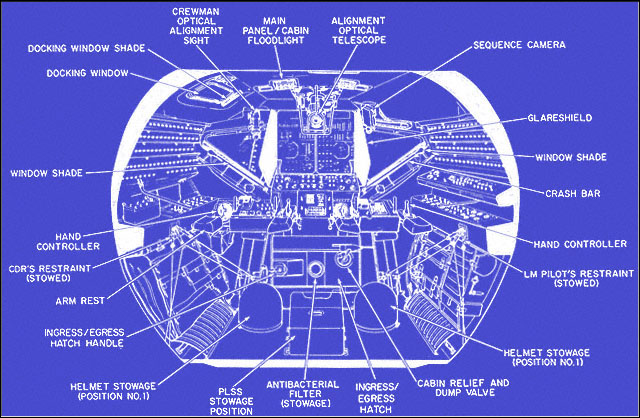
This is a diagram of the forward part of the LM cabin. The DAC is shown mounted
in the upper forward part of the right window, pointing down and slightly forward.
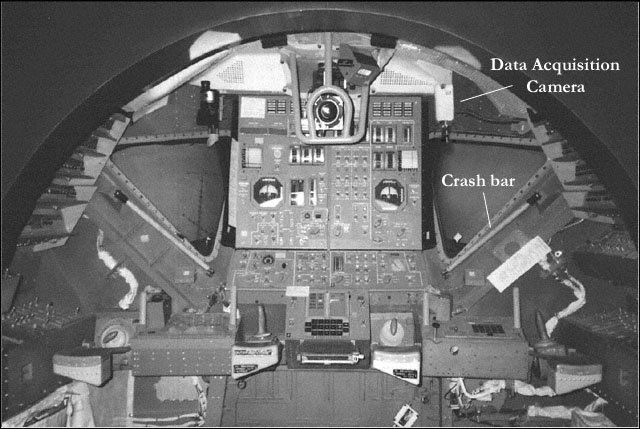
This is a mock-up at the Kansas Cosmosphere. One thing to keep in mind when thinking about the location and orientation of the DAC during the landings is that the upper inner corner of the windows in the LM are a good foot, or more, in front of the lower corner, which is itself half a foot, or so, in front of the upper outer corner. A way to visualize this would be to take a book, hold it in front of you facing the cover, tilt the upper edge away from you by about 45 degrees, then turn it to the right about 45 degrees. This is roughly the angle of the right window. The object was good downward and sideways visibility using one flat window. This picture also shows a clear view of the crash bar in the stowed position. Why do we care about the crash bar? It's the dark line seen along the right edge of the Apollo 11 and Apollo 12 landing videos (or along the upper right edge in my rotated versions), and is a good orientation cue.
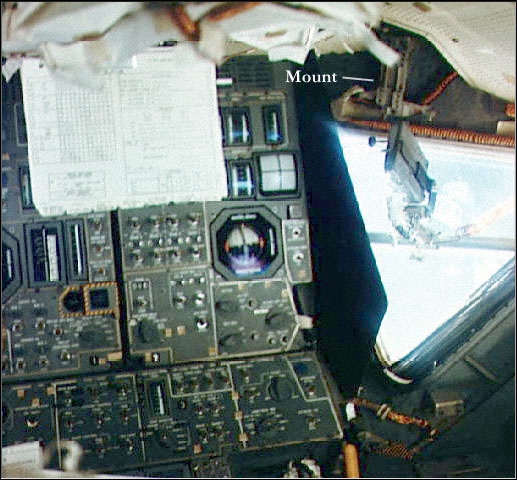
At certain times, like descent and landing for instance, the crash bar is placed across the window as shown above in this photo of LM5 from the Apollo 11 mission. In this view, the DAC has been mounted on the crash bar using a clamp and a 90 degree bracket, and is shown in the position it will be in for the EVA. During the descent and landing the DAC is mounted at the location labeled "Mount", and is pointing almost straight down. A good view of the mounting bracket can be seen in LM2, (Hi-res view of the interior of LM2, 349k) at the NASM. The bracket is just above the inner upper corner of the right window. The corresponding bracket above the left window is one of two positions for mounting the COAS.
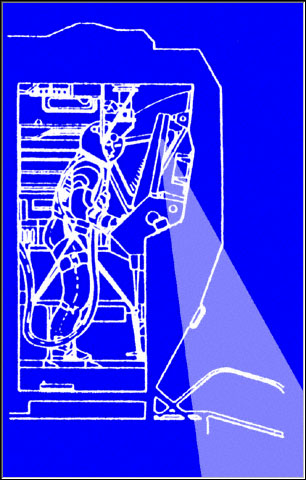
This diagram is a side view of the LM cabin, and shows
the approximate
field of view of the DAC when mounted for landing.
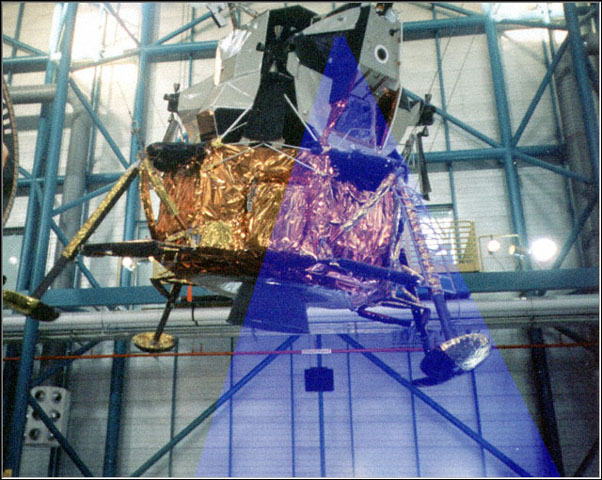
Here's a more oblique picture of the approximate field
of view of the DAC, using
LM9 located at KSC. I chose LM9 to illustrate this because
of the unique ground
level view of an airborne Lunar Module.

This picture superimposes a drawing
of the forward landing gear and the crash bar onto a frame from the video.
The angular extensions that you see throughout the video are the right
hand portion of the main and secondary struts of the plus Z gear. On the
Apollo 11 landing a small portion of the pad is visible, as well. On the
Apollo 12 video the pad doesn't appear until after touchdown.